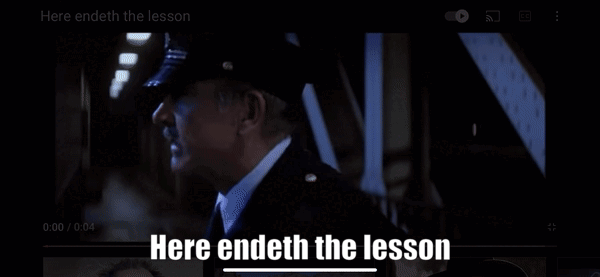TV Life Lesson: The Wire - Nobody Remembers a 40-Degree Day
🤖 The AI Revolution: From 40-Degree Mediocrity to 100-Degree Mastery
"That's good. That's like a 40-degree day. Ain't nobody got nothing to say about a 40-degree day. Fifty. Bring a smile to your face. Sixty, sht, niggas is damn near barbecuing on that motherfer. Go down to 20, niggas get their btch on. Get their blood complaining. But forty? Nobody give a f** about 40. Nobody remember 40, and y'all niggas is giving me way too many 40-degree days! What the f***?"** — Stringer Bell
🎬 The Story
In HBO's The Wire, Stringer Bell isn't just running corners—he's running a business empire with the cold precision of a Fortune 500 CEO. In one of the show's most overlooked moments of brilliance, Stringer calls out his crew for delivering nothing but "40-degree days."
What's a 40-degree day? It's mid. It's forgettable. It's the temperature that's neither hot nor cold, neither memorable nor remarkable. It just... exists.
Stringer's frustration isn't about the weather—it's about mediocrity masquerading as productivity.
🤖 The AI Revolution: Welcome to the 40-Degree Day Factory
We're living through the biggest creative disruption since the printing press, and everyone's rushing to grab their piece. ChatGPT, Claude, Gemini, Midjourney, Runway, ElevenLabs—the tools are democratized and powerful.
But here's what's happening: We're drowning in 40-degree days.
Every day, millions of people are pumping out AI-generated blog posts, synthetic social media content, auto-generated videos, chatbot-written emails, and algorithm-optimized everything. The result? A tsunami of perfectly adequate, completely forgettable content that nobody will remember next week.
It's the creative equivalent of Stringer's dealers just standing on corners, moving product, but building nothing lasting.
📱 The iPhone Moment For AI.
Remember when digital cameras put professional photography tools in everyone's pocket? Suddenly, everyone was a "photographer." Instagram exploded with billions of images.
But here's the thing: Not everyone became Ansel Adams. Not everyone became Annie Leibovitz. As media mogul Barry Diller once said about smartphone cameras, not everyone with a cell phone was going to become the next Steven Spielberg.
The democratization of tools didn't eliminate the need for vision, skill, and craft—it just separated the artists from the button-pushers.
AI is having its iPhone moment right now. The tools are incredible, accessible, and getting better every day. But most people are using a Formula 1 race car to drive to the grocery store. They're taking the most powerful creative technology ever invented and using it to generate the same tired listicles and generic marketing copy that cluttered the internet before AI existed.
What does this mean for you? The same pattern that separated Instagram snapshots from Ansel Adams photographs will separate AI-generated content from truly memorable work.
💡 The Lesson: Volume is the Path to Excellence
🔥 What Makes a 100-Degree Day?
Stringer Bell knew his product had to be distinctive, memorable, and superior. In the AI era, that translates to understanding that AI isn't here to replace your creativity—it's here to amplify it through volume.
Here's where most people get it wrong: they think AI is about creating one perfect piece. But there's a famous parable from Art & Fear: Observations on the Perils (and Rewards) of Artmaking by David Bayles and Ted Orland that reveals the truth.
A ceramics teacher divided his class into two groups. Group A would be graded solely on the quantity of work produced—literally, the total weight of their pottery. Group B would be graded on the quality of a single, perfect piece.
The result? The quantity group produced not only more work, but higher-quality work.
Why? Because while the quality group sat around theorizing about perfection, the quantity group was learning from their mistakes, iterating rapidly, and discovering what actually worked through trial and error.
This is what AI enables: rapid iteration at unprecedented scale.
Intent Over Output: Don't create because you can—create because you have something worth saying. But once you know what you want to say, AI lets you explore a hundred different ways to say it until you find the one that lands.
Human Insight + AI Power: Use AI as your research assistant, not your replacement. Let technology amplify your creativity, not substitute for it. The key question isn't "What can AI do for me?" but "What do I uniquely understand that the AI doesn't?"
Personal Voice Matters More Than Ever: In a sea of synthetic content, authenticity becomes premium. Your perspective, experiences, and voice are irreplaceable. People connect with humans, not algorithms.
🎯 Real-World Application
Here's the difference between using AI to create forgettable 40-degree days versus memorable 100-degree experiences:
The Wrong Way: "ChatGPT, write me a blog post about marketing" (one and done)
The Right Way: "Help me generate twenty different angles on this marketing problem, then let me test which resonates most with my audience and refine from there"
The Wrong Way: Auto-generating social media posts that sound like every other brand
The Right Way: Using AI to create fifty variations of your core message, A/B testing them, and learning what actually connects with your specific audience
The Wrong Way: Having AI write your screenplay because "it's faster"
The Right Way: Using AI to generate dozens of character backstories, plot variations, and dialogue options, then selecting and refining the elements that serve your unique vision
The pottery class principle applies perfectly here: AI allows you to create volume, and through that volume, you discover what actually works. You're not just making more—you're learning faster.
📺 The Lesson in Other Shows
Silicon Valley: Richard's Rushed Launch Problem
Richard Hendricks and Pied Piper spent six seasons proving this point perfectly. Throughout the series, Richard constantly faced pressure to rush his compression algorithm to market, often leading to half-baked products that couldn't scale. In one pivotal moment, they launch their platform and it gets great reviews from industry insiders—but hardly anyone actually uses it. Why? Because it was too complicated. Classic 40-degree day syndrome: technically impressive, completely forgettable for actual users.
But here's the kicker: In the finale, Richard's team creates an AI so powerful it accidentally breaks internet encryption. They literally build something that could destroy global privacy. Richard has to intentionally sabotage his own company to save the world. The lesson? Sometimes the most powerful technology requires the most careful, thoughtful implementation.
The show perfectly captures what happens when you focus on building one "perfect" solution instead of iterating with users. Richard's team would have been better off releasing a dozen imperfect versions and learning from real feedback than perfecting something in isolation.
⚠️ Failure to Learn the Lesson
The 40-Degree Day Trap in Action:
Content mills are already flooding the internet with thousands of AI-generated websites, social media bots creating "engaging" but hollow content, and marketing agencies replacing writers with prompt engineers. The result? A race to the bottom where cheap and fast beats meaningful and memorable.
Companies falling into this trap are publishing 50 AI blog posts per week instead of using AI to rapidly test and refine 2 exceptional concepts. They're replacing customer service with chatbots that frustrate users instead of using AI to help human agents provide better, more personalized service. They're using AI to spam prospects instead of using it to understand what those prospects actually need.
Remember Pets.com? Remember when every website needed a dancing baby GIF? Remember the ice bucket challenge? The internet is littered with 40-degree day phenomena that burned bright for a moment and then disappeared completely. The same fate awaits most AI-generated content that prioritizes volume without purpose.
The real tragedy? These companies are sitting on technology that could help them rapidly iterate toward genuinely groundbreaking work, and they're using it to automate mediocrity at scale.
🚀 The Future Belongs to Rapid Iterators
Here's the paradox: The same technology creating the 40-degree day flood is also the most powerful creative tool ever invented.
The Christopher Nolan Factor: Everyone has access to the same cameras, but only Christopher Nolan makes Inception. Everyone will have access to the same AI, but only true creators will make work that lasts.
The winners will be people who use AI to enhance their natural talents through rapid experimentation. They'll combine human insight with machine-powered iteration. They'll create dozens of versions to find the ones that truly resonate. They'll understand that tools don't make artists—artists make tools useful by pushing them to their limits.
Think about what becomes possible when we stop using AI to replicate what already exists and start using it to rapidly test what could exist. Independent filmmakers using AI to generate and test hundreds of visual concepts before committing to expensive production. Authors using AI to explore dozens of plot variations and character developments before settling on the most compelling path. Entrepreneurs using AI to rapidly prototype and test business concepts that would have taken months to develop manually.
🎯 Your 100-Degree Day Strategy
Ask Yourself:
What do I uniquely understand that AI doesn't?
What problems am I solving that actually matter to people?
How can I use AI to test a hundred variations of my core idea?
What story needs to be told that only I can tell, and how can AI help me explore every possible way to tell it?
The 100-Degree Day Process:
Generate Volume First: Use AI to create 20-50 variations of your core concept in the first session
Test Small: Release the top 5-10 variations to small audience segments (friends, beta readers, focus groups)
Measure What Matters: Track engagement, retention, shares, or whatever metric actually indicates impact
Double Down: Take the best-performing variation and create 20 more iterations around that winning concept
Refine Ruthlessly: Repeat the process weekly until you have something that consistently gets remembered
Weekly Iteration Cadence:
Monday: Generate new variations using AI
Tuesday-Wednesday: Test with small audiences
Thursday: Analyze results and identify winners
Friday: Create new iterations based on what worked
Weekend: Plan next week's experiments
The Stringer Bell Standard: Before you publish, post, or ship anything, ask: "Will anyone remember this tomorrow?" If the answer is no, don't stop creating—create more variations until you find the one that sticks.
🔥 The Bottom Line
AI isn't going away. The tools will get better, faster, and cheaper. The content flood will get worse before it gets better.
But that's exactly why this is your opportunity.
While everyone else is cranking out single versions of forgettable, generated content, you can be the person using AI to rapidly iterate toward work that cuts through the noise. Work that gets remembered. Work that builds your reputation. Work that tells stories that have never been told before because you had the time and tools to explore every possible angle until you found the perfect one.
As Stringer Bell knew: Nobody remembers a 40-degree day. In any game, the winners are the ones who create something undeniably better and more memorable.
The question isn't whether AI will change everything—it already has.
The real question is: Will you use AI to tell the stories that have been waiting inside you, that couldn't be ignored, that only you can tell?
Will you use this technology to explore a hundred solutions to problems that matter, discovering the ones that actually work? Or will you just use it to create one mediocre piece of content and call it done?
Stringer Bell’s TV Life Lesson in The Wire taught us that in any competitive landscape, mediocrity is forgettable. In the age of AI, that lesson has never been more relevant.





